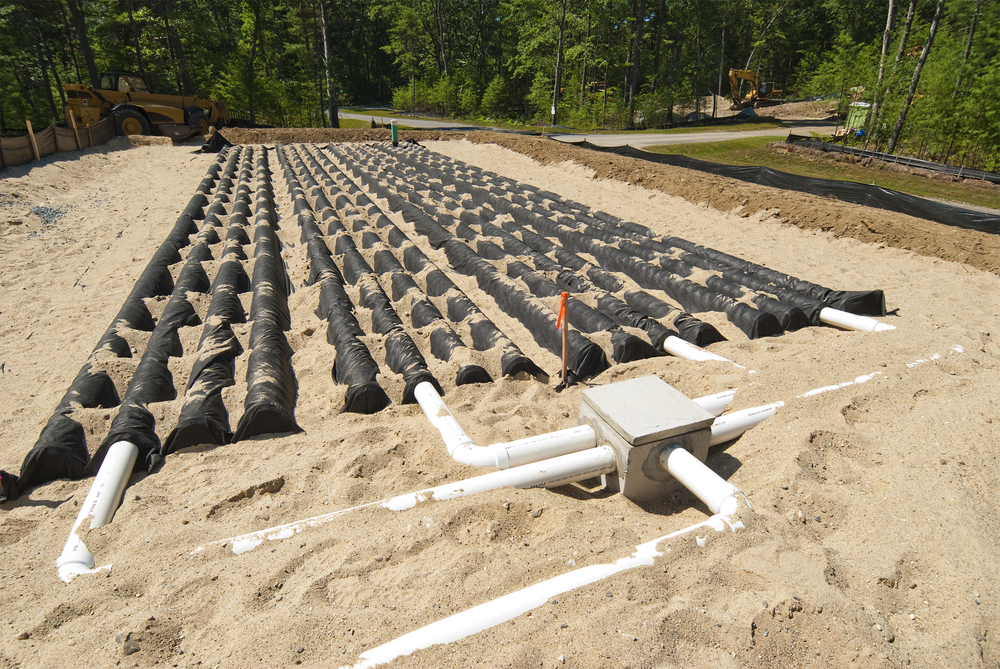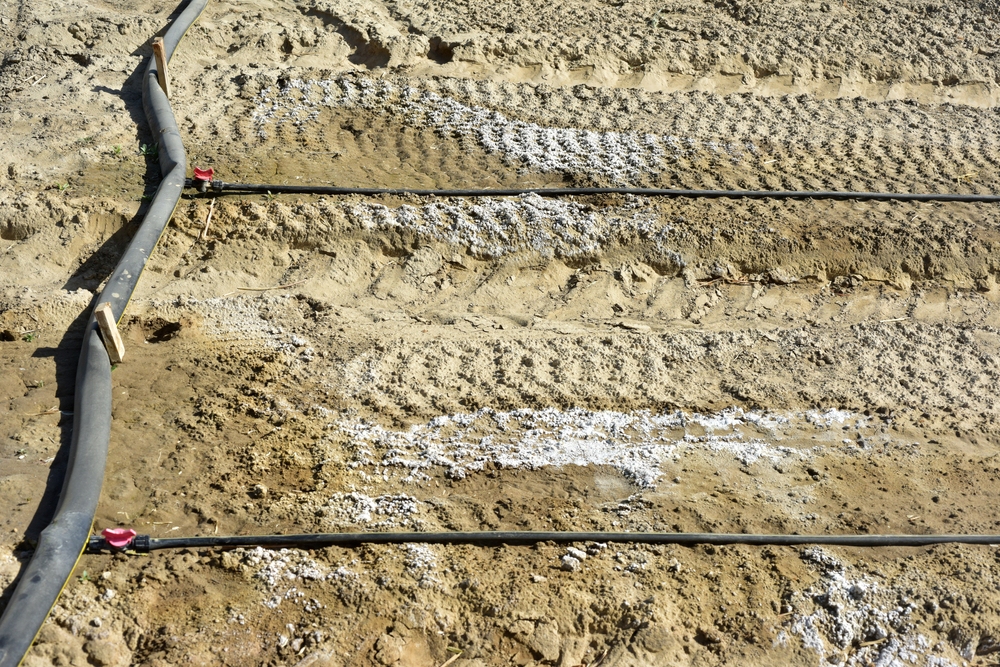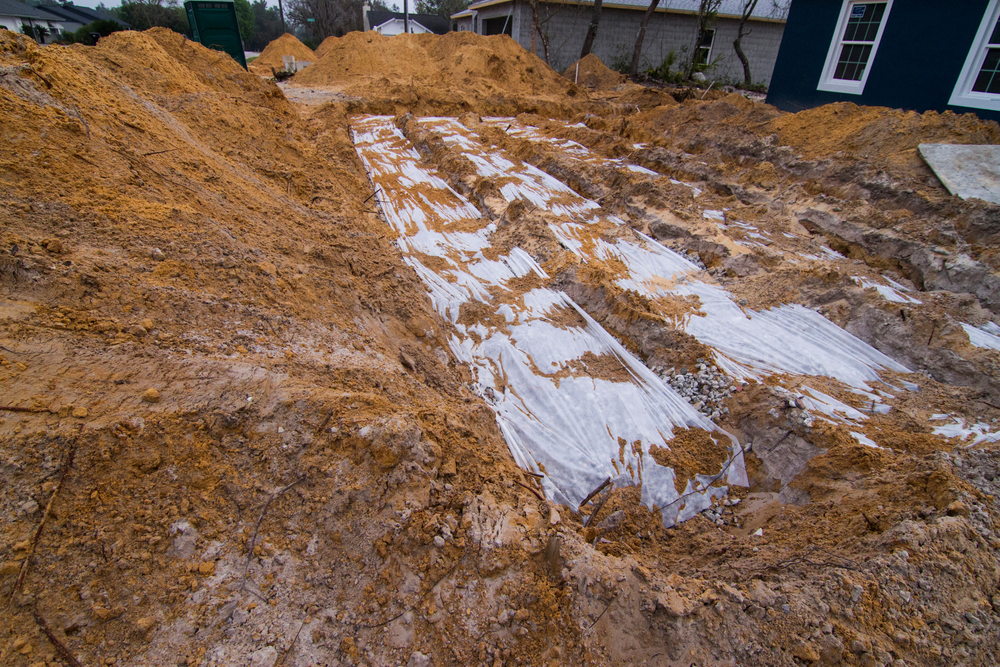
When it comes to home septic systems, the leach field is often the unsung hero working silently beneath your yard. Yet, understanding this critical component can save homeowners thousands in preventable repairs and protect both property value and environmental health.
A leach field (also called a drain field) serves as the final filtration stage in your septic system, where wastewater completes its journey before returning to the soil. For property owners with septic systems, knowledge about leach fields isn’t just interesting – it’s essential for proper maintenance and avoiding costly disasters.
Whether you’re a new homeowner with a septic system or you’ve lived with one for years, this guide will provide the critical information you need about leach fields, their function, maintenance, and why they deserve your attention.
Let’s explore what makes leach fields so important and how AAA Organized Plumbing can help ensure yours remains in optimal condition.
What Is a Leach Field?
A leach field, sometimes called a drain field or leach drain, is a crucial component of your septic system that handles the final treatment of wastewater. After solids settle in the septic tank and undergo initial bacterial breakdown, the resulting effluent flows into the leach field through a series of perforated pipes.
These pipes are strategically laid in gravel-filled trenches buried approximately 1-3 feet below ground. The perforations allow wastewater to slowly seep into the surrounding gravel bed and then into the soil. This process is far more sophisticated than simply dumping wastewater into the ground.
The soil around your leach field acts as a natural biological filter. As wastewater percolates through different soil layers, harmful bacteria and viruses are removed through physical filtration, adsorption, and the work of microorganisms in the soil. Nutrients in the wastewater are consumed by soil bacteria or taken up by nearby plant roots.
A properly functioning leach field represents an elegant partnership between human engineering and natural processes. The system relies on aerobic bacteria (those requiring oxygen) in the soil to complete the purification process, which is why proper leach field placement and design are critical.
The size of your leach field depends on several factors, including:
- The number of bedrooms in your home (which determines expected water usage)
- Soil characteristics and percolation rates
- Local regulations and code requirements
- Groundwater level and proximity to water sources
Most residential leach fields range from 4,500 to 9,000 square feet depending on these variables. When designed and maintained correctly, a leach field can effectively process wastewater for 20-30 years before requiring significant attention.
How Leach Fields Work: The Science Behind the System

Understanding the science behind leach fields helps appreciate their importance in protecting public health and the environment. The process begins after wastewater leaves your septic tank, where solid waste has settled and undergone initial anaerobic decomposition.
When this partially treated effluent enters the leach field, it contains suspended solids, dissolved organic matter, nutrients like nitrogen and phosphorus, and potentially harmful pathogens. The leach field’s job is to complete the purification process before this water rejoins the natural water cycle.
The distribution pipes in your leach field spread wastewater evenly throughout the drain field area. As water exits through the pipe perforations, it first encounters a layer of gravel or crushed stone. This layer serves two important purposes: it supports the pipes and provides initial filtration while creating space for air circulation.
Oxygen is crucial to the process because aerobic bacteria work much more efficiently than the anaerobic bacteria in your septic tank. These aerobic microorganisms are incredibly efficient at breaking down remaining organic matter in the wastewater.
As water continues its downward journey, a biomat develops at the soil interface. This layer of anaerobic bacteria, organic matter, and mineral deposits acts as an additional filter, further slowing water movement and enhancing treatment. Though it sounds problematic, a healthy biomat is actually essential for proper wastewater treatment.
The final purification occurs as water moves through the native soil profile. Different soil types offer varying treatment capabilities – loamy soils with a mix of sand, silt, and clay generally provide optimal filtration. Sandy soils may allow water to pass too quickly, while heavy clay can cause drainage problems.
This natural purification system is remarkably effective. Studies show that properly functioning leach fields can remove up to 99% of fecal coliform bacteria within the first 12 inches of unsaturated soil. By the time the water reaches groundwater level, it has been cleansed of most contaminants and is safe to rejoin the water table.
Signs of Leach Field Problems

Recognizing leach field issues early can save you from costly repairs and potential health hazards. Since these systems operate underground, problems often manifest in visible warning signs that homeowners should never ignore.
The most obvious indicator of leach field failure is pooling water or soggy areas above or near the drain field. When your leach field can no longer adequately process wastewater, the liquid seeks the path of least resistance – often upward to the surface. This effluent may appear clear or have a grayish color and typically produces an unpleasant sewage odor.
Your lawn itself can provide early warning signs. Unusually lush, green grass over the leach field area indicates excess nutrients and moisture reaching the surface. While it might seem beneficial for your landscaping, this is actually a red flag that wastewater isn’t being properly filtered through the soil.
Inside your home, slow-draining fixtures throughout multiple areas of the house often point to leach field problems. When toilets flush slowly, sinks drain poorly, and you’ve ruled out simple clogs, your leach field may be saturated or failing. In severe cases, you might experience sewage backups into your home.
Another concerning sign is water quality changes in nearby wells or surface water. If your leach field fails to properly treat wastewater, contaminants can reach groundwater or nearby streams, potentially causing elevated nitrate levels or bacterial contamination.
Unusual odors around your property, particularly near the drain field area, should never be dismissed. The smell of sewage indicates that wastewater isn’t being adequately treated in the soil and is reaching the surface where it releases gases.
Finally, if you notice unexpected settling of the soil above your leach field or systems like sump pumps working overtime to manage water, these could be indicators of leach field issues affecting your overall property drainage.
If you notice any of these warning signs, it’s time to contact professionals from AAA Organized Plumbing for a thorough inspection. Early intervention can often save a failing leach field and prevent more extensive damage.
Common Causes of Leach Field Failure

Leach field systems typically fail for predictable reasons, many of which are preventable with proper knowledge and maintenance. Understanding these common causes can help extend your system’s life and avoid costly repairs.
Physical damage to the field represents one of the most direct causes of failure. Heavy vehicles driving or parking over the leach field can crush pipes and compact soil, reducing its permeability. Even regular foot traffic can gradually compact soil over time. Similarly, constructing buildings, sheds, or concrete surfaces over the drain field restricts oxygen flow to soil bacteria and prevents evaporation, both essential for proper function.
Water overload is another primary culprit. When a leach field receives more water than it was designed to handle, it simply can’t process it effectively. This can happen from:
- Household leaks sending constant water to the septic system
- Improper drainage that directs rainwater or snowmelt toward the leach field
- Excessive water use within the home (multiple loads of laundry in one day, etc.)
- Connected gutter downspouts or sump pump discharge to the septic system
Solid waste accumulation in the leach field creates serious problems. When solids escape the septic tank due to insufficient maintenance or tank damage, they can clog the perforations in leach field pipes. Over time, this biosolid accumulation reduces the system’s capacity until complete failure occurs.
Chemical contamination poses a more insidious threat. Harsh cleaning products, excessive bleach, antibacterial soaps, and improperly disposed chemicals can kill the beneficial bacteria your septic system relies on. Without these microorganisms, organic matter doesn’t break down properly, leading to system failure.
Root intrusion from nearby trees and shrubs can physically damage pipes and create blockages. Tree roots naturally seek water sources, and your leach field presents an attractive target with its consistent moisture and nutrients.
Finally, age and poor initial design contribute to many failures. Even well-maintained systems eventually reach the end of their functional lifespan. Systems installed in unsuitable soil conditions, placed too close to groundwater, or improperly sized for the household they serve are particularly vulnerable to premature failure.
Regular inspections from experienced professionals can identify potential issues before they develop into complete system failures. If you’re concerned about any of these factors affecting your leach field, the experts at AAA Organized Plumbing can provide assessment and maintenance services to extend your system’s life.
Proper Maintenance for Healthy Leach Fields

Maintaining your leach field properly isn’t just about avoiding repairs – it’s about protecting your property investment and the environment. With regular care, a leach field can function effectively for decades. Here’s how to keep yours in optimal condition.
Regular septic tank pumping stands as the most critical maintenance task. When your tank becomes too full of solids, these materials can escape into the leach field, causing irreversible damage. Most households should schedule pumping every 3-5 years, though this varies based on household size and usage patterns. Professional pumping services include inspection of baffles and other components that affect leach field health.
Water conservation directly benefits your leach field by preventing hydraulic overload. Simple practices make a significant difference:
- Fix leaking faucets and running toilets promptly
- Install water-efficient fixtures and appliances
- Space out laundry loads across the week rather than doing multiple loads in one day
- Take shorter showers and avoid excessive bath water
Being mindful about what enters your septic system protects the biological processes in your leach field. Avoid flushing anything other than human waste and toilet paper. Cooking grease, coffee grounds, dental floss, “flushable” wipes, feminine hygiene products, and household chemicals can all disrupt your system’s function.
Protect the physical integrity of your leach field area by keeping it clear of structures, heavy objects, and vehicles. The soil above a leach field should remain undisturbed to maintain proper aeration and avoid compaction. Establish this area as a no-parking, no-construction zone.
Proper landscaping around your leach field can enhance its function. Grass is the ideal cover, as its shallow root system helps with water absorption without threatening pipes. Avoid planting trees or shrubs within 30 feet of the leach field, as their aggressive roots seek water sources. Additionally, direct rainwater drainage away from the field to prevent oversaturation.
Annual inspection of your entire septic system provides peace of mind and catches problems early. A qualified professional can check for signs of problems and recommend preventive measures before major issues develop. Many homeowners schedule these inspections in conjunction with their regular plumbing maintenance.
Following these maintenance practices will significantly extend the life of your leach field and protect your property from the disruption and expense of system failure.
When to Call a Professional

While regular maintenance helps prevent problems, certain situations require immediate professional attention for your leach field. Knowing when to call experts can prevent minor issues from becoming major disasters.
Sewage backup into your home constitutes an emergency situation. If wastewater is returning through drains or toilets, this indicates a severe blockage in your septic system. This situation poses health risks and requires immediate professional intervention. Don’t attempt to use chemical drain cleaners, as these can damage your system and complicate repairs.
Standing water over your leach field area represents another urgent situation requiring professional assessment. This visible effluent indicates that wastewater isn’t properly percolating through soil layers. The cause could be several issues:
- Hydraulic overload of the system
- Clogged distribution pipes
- Damaged components
- Soil saturation or compaction
Persistent slow drains throughout your home, especially when multiple fixtures are affected simultaneously, often point to leach field problems rather than simple pipe clogs. When standard plunging or auger use doesn’t resolve the issue, it’s time to call septic professionals.
Unusual odors around your property, particularly sewage smells near the leach field area, indicate that wastewater isn’t being properly treated and absorbed. Professional diagnosis can determine whether the issue lies with the leach field itself or other septic components.
After flooding events or unusually heavy rainfall periods, your leach field may become temporarily overwhelmed. If drainage problems persist for more than a few days after weather improves, professional evaluation can determine if your system has sustained damage requiring repairs.
When purchasing a home with a septic system, a comprehensive inspection of the leach field should be part of your due diligence process. Professional evaluation can identify the system’s age, condition, and any developing issues that might require attention in the near future.
Finally, if you’re planning construction, landscaping changes, or other significant property alterations, consult with septic professionals first. They can help you avoid inadvertently damaging your leach field or creating conditions that might compromise its function.
For all these situations, working with experienced professionals from AAA Organized Plumbing ensures you receive knowledgeable assessment and appropriate solutions for your specific septic system configuration.
Frequently Asked Questions
How long should a properly installed leach field last?
A well-designed and maintained leach field typically lasts 20 to 30 years. Lifespan depends on soil type, water use, and upkeep. Some last over 40 years with good care, while neglect can cause early failure. Regular inspections help spot issues and extend its life.
Can I plant anything over my leach field area?
Grass is best because its shallow roots aid evaporation without damaging pipes. Avoid trees, shrubs, deep-rooted plants, and even shallow-rooted vegetables or perennials directly over the field to prevent damage and soil compaction. Edible plants are not recommended due to contamination risks.
What happens if my leach field completely fails?
Complete failure usually means costly replacement ($5,000–$20,000), requiring excavation and new drainage installation. Temporary waste management is needed during this time. Some partial fixes like hydro-jetting might help but aren’t always effective. Prevention and early maintenance are key.
How often should I have my leach field inspected?
Annual inspections are recommended to catch problems early. Inspections check drainage, soil saturation, and pipe clogging. More frequent checks are advised if water use is high or past issues exist. Inspections often coincide with septic tank pumping.
Can a failing leach field contaminate my well water?
Yes, especially if the well is downhill or close to the field. Contaminants like bacteria and nitrates can enter groundwater, posing health risks. Maintaining at least 100 feet between wells and leach fields and regular water testing are essential.
What You Need to Remember
Your leach field is a vital part of your property and environment. Knowing how it works, spotting issues early, and maintaining it properly can save you money and protect water quality. Prevention is easier and cheaper than emergency repairs.
Schedule regular inspections, manage water use, and avoid damaging the area. If you notice signs like standing water, slow drains, or odors, contact a professional promptly. With proper care, your leach field can serve your home effectively for many years.
For expert septic system support, trust experienced professionals to keep your system in top shape.
About AAA Organized Plumbing
With more than 25 years of experience, AAA Organized Plumbing proudly serves homeowners throughout Northern California with expert septic system solutions. Our certified professionals handle everything from installation and maintenance to inspection and repair, with a special focus on leach field assessment and rehabilitation. We combine technical skill with a deep understanding of local soil conditions to ensure every job is done right.
Whether you need routine maintenance or a full system replacement, our team is ready to help. Contact us today to schedule an appointment with one of our licensed plumbing experts.